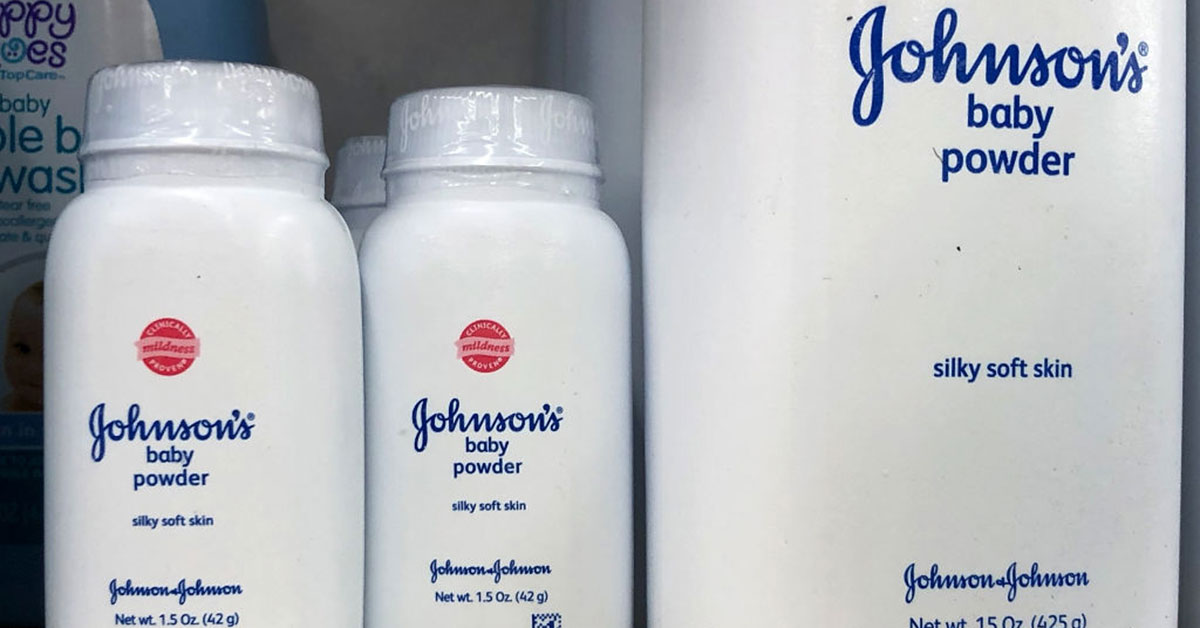There are a slew of baby hygiene items on the market now, creams for cheeks, organic lotions, and countless products for the diaper region.
With all the options available, thousands of mothers still turn to the brand that has been around for decades to treat their baby’s diaper rash, just as their mothers did before them.
We are now finding out the hard way that just because a brand is popular, or used for generations, doesn’t make it the safest option for our baby.
A series of lawsuits against the giant company Johnson & Johnson has brought widespread attention to a deadly ingredient inside their products containing talc.
First recognized for being a deadly carcinogen at the turn of the 20th century, asbestos wasn’t widely discussed in the scientific field for being deadly until the 1960’s.
Dr. Irving Selikoff at the Mount Sinai School of Medicine in New York City linked health and mortality to insulation workers exposed to asbestos, finding shocking rates of lung cancer and asbestosis.
Now, over 50 years later, individuals are still fighting companies for including this poison in products designed and marketed for everyday use, and often for babies none the less.
One woman has been highlighted for her illnesses in conjunction with Johnson & Johnson baby powder use.
Darlene Coker raised two daughters in Eastern Texas before being diagnosed with the rare cancer mesothelioma, which is “a signature of exposure to asbestos”, according to Reuters.
Confusion overtook Coker when she learned of her deadly cancer. Wanting answers, she hired personal injury lawyer Herschel Hobson.
It was Hobson who discovered the likely culprit of Coker’s recent suffering was from long term use of Johnson’s Baby Powder; dousing it on her children and on herself for years.
During the investigation for court, it was found, according to Reuters, that Johnson & Johnson had a minimum of three lab tests from 1972 to 1975 that reported levels of asbestos in its talc.
If the company tried to hide these results, what other lab tests could they be hiding?
During this court proceeding, Hobson was unable to get the bigwigs at the company to hand over company records that may indict them.
The unfortunate early closing of Coker’s case is not the end to this poisonous tale. There are now almost 12,000 plaintiffs claiming that “the company’s talc caused their cancers — including thousands of women with ovarian cancer”, according to Reuters.
Numbers like that are hard to ignore, prompting the court to compel Johnson & Johnson to release thousands of documents, including those laying out the data around testing for asbestos in their talc.
These papers revealed that between 1971 and early 2000’s products that had talc in them did occasionally test positive for asbestos.
Not only did some of their products test positive for the carcinogen, but the company’s executives, scientists, doctors, and lawyers all gathered on how to deal with the problem.
These discussions and concerns were never brought to the public’s attention, despite it being common knowledge that any amount of exposure is dangerous.
The National Cancer Institute reports that “evidence suggests there is no safe level of asbestos exposure.”
It is daunting that people involved in a company that makes millions off of selling baby products would keep information like this to themselves for fear of a drop in sales.
Certain documents, also, uncovered that the company influenced “U.S. regulators’ plans to limit asbestos in cosmetic talc products and scientific research on the health effects of talc”, according to Reuters.
Only a small portion of talc is actually tested for asbestos. The company manufactures thousands of products a day that contain talc, so testing every single one would not fare well in a cost to risk analysis.
So, to think that these findings were only a fractioned portion of products, it is unsettling how much poison may be found in a large scale investigation.
According to the U.S. Geological Survey, China is one of the leading importers of talc, and since 2003, talc for baby powder in the U.S. has come by means of China through supplier Imerys Talc America.
This is significant, because, according to Seattlepi, in 2009 South Korea’s Food and Drug Administration removed tens of thousands of items from their shelves that contained asbestos, all originating from raw Chinese talc.
The Korean government reported that the talc was found to have “dangerously high, completely unacceptable levels of asbestos.”
Our government should take the same precautions and care of its citizens, many who lay in the long dormant period of the carcinogen, finding out they have cancer when it’s too late.
Our children deserve better than this. With so many products available offering talc free options for baby powder, there is no reason to expose our babies to this high level of risk.
Many organic companies pride themselves on eliminating elements that are prone to carry deadly carcinogens.
Douse you and your baby in products that you have researched because there are many on the market that hide potential killers, as Mommy Underground has previously reported.
Also, be on the lookout for unsuspecting products that are now flooding the market containing talc, such as meats, candies, gum, and some varieties of dried beans, for which the FDA claims to have no “food-grade specifications” for.
Using baby powder is convenient, and has been trusted by moms everywhere, but now we have adequate research to show us otherwise.
Protect you and your family by becoming aware of the facts, and don’t be mislead by multi-billion dollar companies telling you to trust their products blindly.
Please let us know in the comments section if you have had any ill effects from a Johnson & Johnson product, or what safe baby powder you use for your baby.

